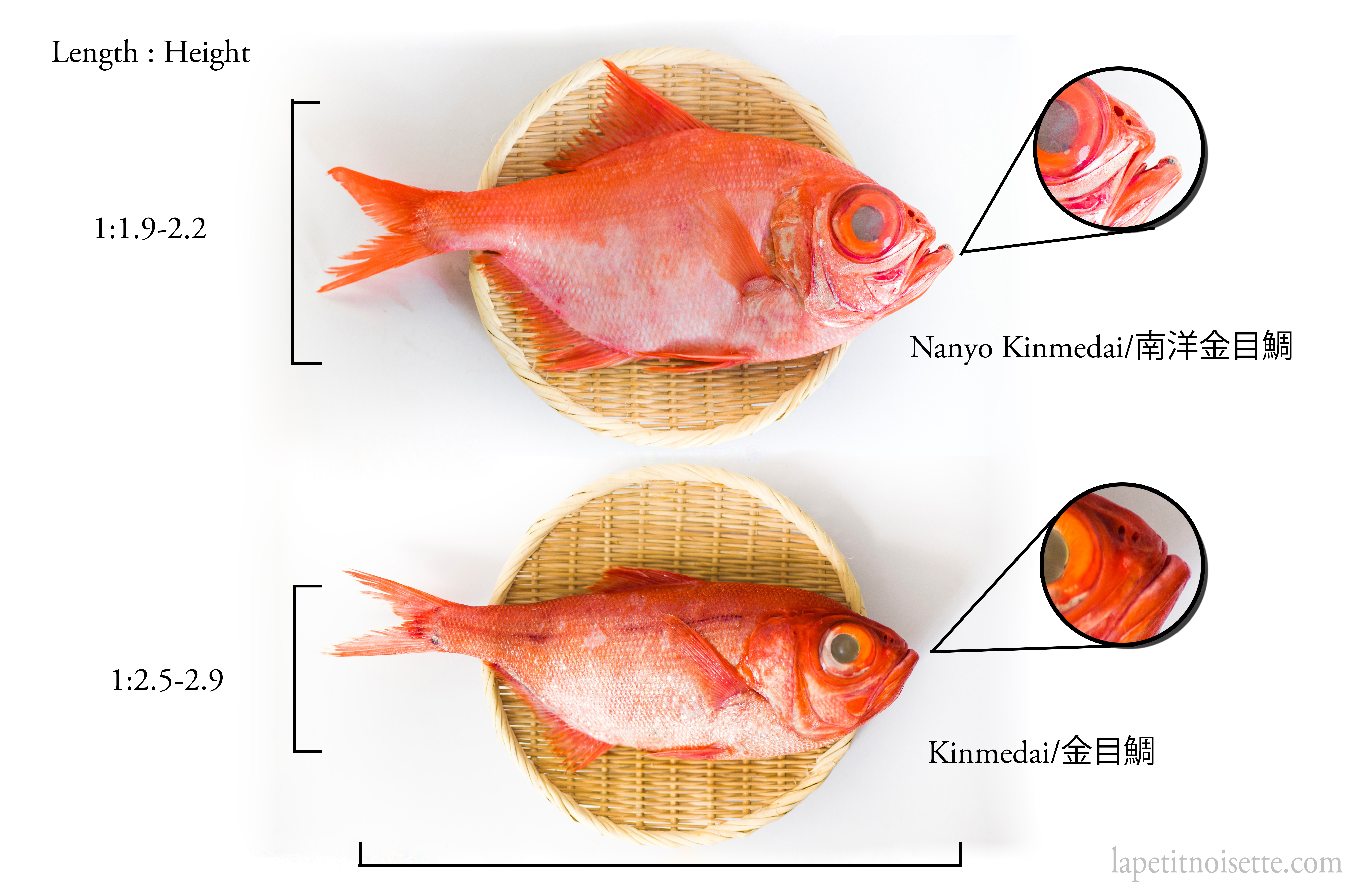
Today, we’ll be introducing a fish sometimes mistaken as golden eye snapper, or kinmedai (金目鯛), which is nanyo kinmedai (ナンヨウキンメ/南洋金目鯛). The reason why they’re so commonly mistaken is that they both belong to the Beryx Genus. With the more famous kinmedai being named Beryx splendens or splendid alfonsino, and nanyo kinmedai being named Beryx decadactylus. Both these fishes are in the Berycidae family, which I intend to go into depth one day as they contain the only other genus other than Beryx, the Centroberyx.
Nanyo (南洋) basically translates to the South Sea, as this fish was caught in more commonly in the Southern waters of Japan. It shares many similarities with Kinmedai as it also is a deep-sea fish, and so has the same characteristic large eyes and bright red colour.
It’s actually sold for a cheaper price at markets in Japan compared to Kinmedai as it’s said to have less marbling of fat in it’s flesh. However, from personal experience I found that whilst this is true, it makes up for this by having a thick coating of fat surrounding the stomach cavity, making this fish more idea for cooking dishes like kinmedai-meshi where you wouldn’t trim off excess fat and the fat can then melt into the dish, compared to serving as sashimi, where the consistency of fat across the fish matters more. It also has a much smaller and taller and narrower stomach cavity compared to kinmedai but can basically be filleted the same way.

So how do you tell the two apart? For one, nanyo kinmedai is a much flatter and taller fish compared to kinmedai, and is probably the most obvious difference. More specifically though, nanyo-kinmedai has a protruding spike on the lacrimal bone on the head, just where it curves around the front of the day (see image for a better look).

Looking at the entry for Nanyo-kinmedai in the Encyclopedia Nipponica (日本大百科全書), which is the Japanese equivalent of the Encyclopedia Britannica, you find quite a lot of interesting information. For one, apparently the taller body shape of the fish got it called Itakinme (イタキンメ) for sheet metal in Izu Oshima and Odawara, and Hirakinme (ヒラキンメ) for flat metal in Tokyo. It also states something interesting about fish body heights, which is that the body height to length ratio in kinmedai is typically 1:2.5-2.9, compared to nanyo kinmedai, which is typically 1:1.9-2.2.
This is definitely a fish I’ll be eating more of due to it’s more affordable price if I can find it, though it can be rather hard to find sometimes. Though now when you see it in a market sometimes labelled as Kinmedai, especially outside of Japan where someone is trying to pass it off as Splendid Alfonsino, you’ll now be able to tell the difference.
